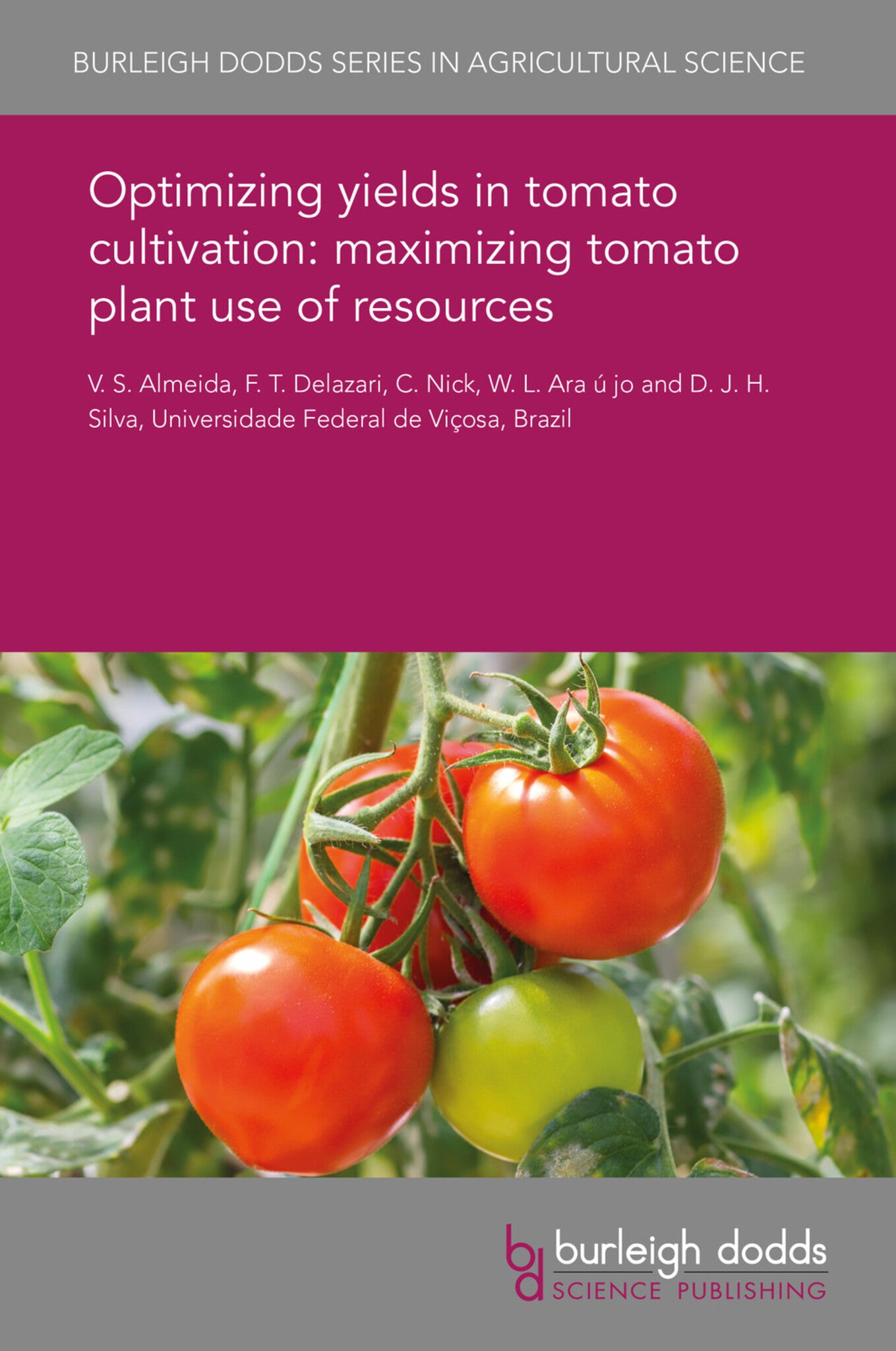We're sorry. An error has occurred
Please cancel or retry.
Optimizing yields in tomato cultivation: maximizing tomato plant use of resources
Regular price
£25.00
Sale price
£25.00
Regular price
£25.00
Unit price
/
per
Sale
Sold out
Re-stocking soon
The operation of leaf stomata affects a plant’s photosynthesis, transpiration and respiration, and allows vegetable dry matter to be produced, which is required for production of the tomato fruit. ...
Read More

Some error occured while loading the Quick View. Please close the Quick View and try reloading the page.
Couldn't load pickup availability
- Format:
-
28 February 2017

The operation of leaf stomata affects a plant’s photosynthesis, transpiration and respiration, and allows vegetable dry matter to be produced, which is required for production of the tomato fruit. The opening and closing of the stomata can be affected by various factors, and this in turn can have an effect on crop yield. After reviewing the role and functioning of the stomata, this chapter considers the main factors that affect stomata opening and closure, namely, soil water availability, light, CO2, relative air moisture, air temperature and wind. It then considers how these and other factors may interact, reviews the cultivational practices which can promote stomatal opening and briefly cover methods for determining the water status and transpiration rate of plants. The aim of the chapter is to provide novel insights into improving tomato yield by ensuring stomatal pores stay open for longer at appropriate times.

Price: £25.00
Publisher: Burleigh Dodds Science Publishing
Imprint: Burleigh Dodds Science Publishing
Series: Burleigh Dodds Series in Agricultural Science
Publication Date:
28 February 2017
ISBN: 9781838792879
Format: eBook
BISACs:
SCIENCE / Life Sciences / Horticulture, Commercial horticulture, TECHNOLOGY & ENGINEERING / Agriculture / Agronomy / Crop Science, TECHNOLOGY & ENGINEERING / Agriculture / Sustainable Agriculture, Sustainable agriculture, Agronomy and crop production

1 Introduction 2 Factors affecting stomatal opening in tomato plants 3 Interaction of stomatal opening factors 4 Cultivation practices to maximize tomato plant use of resources 5 Evaluation of plant water status 6 Future trends and conclusion 7 Acknowledgements 8 References



